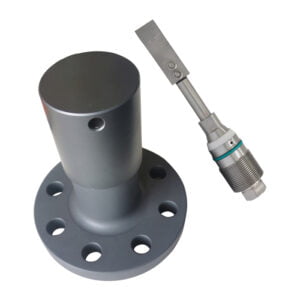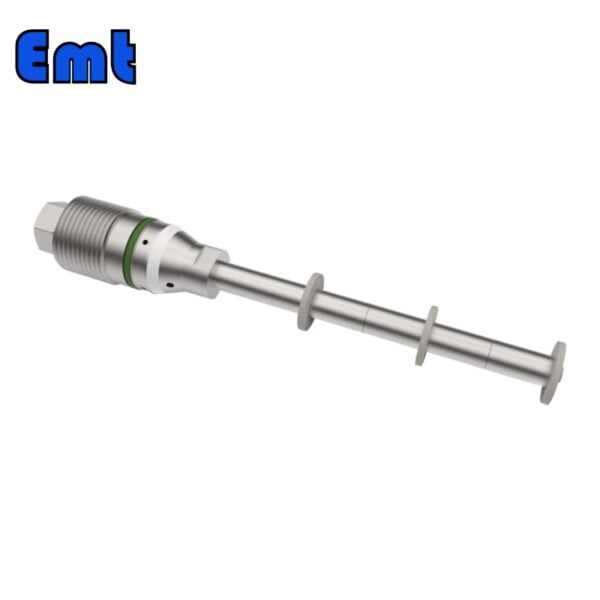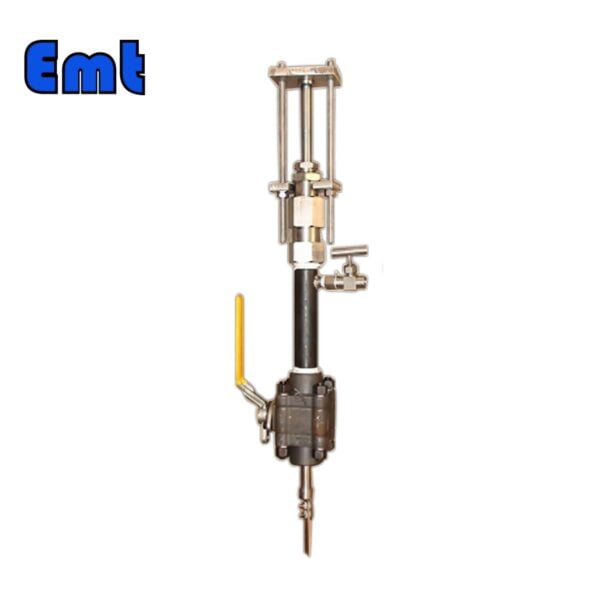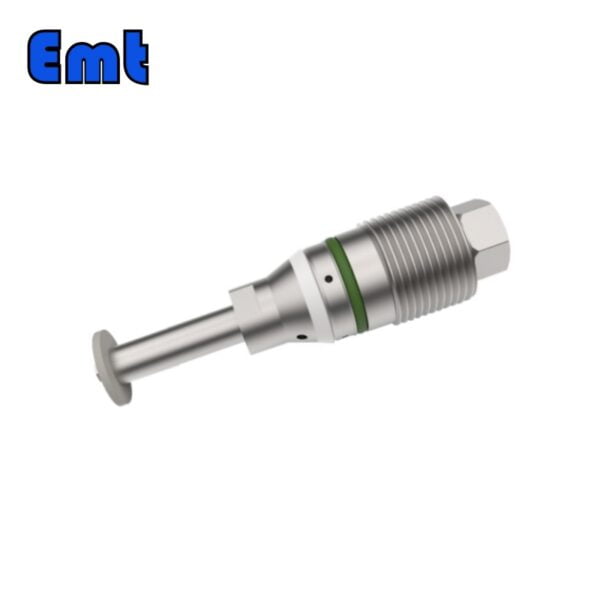Beschreibung
Einführung von Korrosionstupons in Pipelines
Korrosionsgutscheine in Pipelines sind nicht nur erschwinglich. Sie sind auch ein leistungsstarkes Instrument zur Verfolgung von Korrosionsraten in jeder Struktur oder einem System. Es ist jedoch nicht immer so einfach, aussagekräftige Ergebnisse zu erzielen, wie es sich anhört. Dinge wie das Oberflächenbeschluss Ihres Gutscheins, wo Sie ihn platzieren und wie lange Sie ihn an Ort und Stelle lassen, können die Qualität Ihrer Daten ernsthaft beeinflussen.
Korrosions-Gutschein-Tests sind eine Inline-Überwachungsmethode. Sie platzieren die Gutscheine direkt im Prozessstrom und nehmen sie später zur Messung heraus. Es gibt Ihnen ein direktes Maß für den Metallverlust, mit dem Sie die allgemeine Korrosionsrate berechnen können. Das Coole an der Verwendung von Korrosionsgutscheinen ist, dass Ihre Ergebnisse nicht von der Phase der Umgebung abhängen, in der Sie die Messung durchführen.
Warum sollten Sie also Korrosions -Gutschein -Tests verwenden? Hier sind einige Gründe:
- Es ist einfach zu verstehen und anzuwenden.
- Sie können die Exemplare für Prüfungen nach dem Test behalten.
- Sie können verschiedene Legierungen und Inhibitoren vergleichen.
- Es bewertet alle Formen der Korrosion.
- Und es ist kostengünstig.
Korrosionsgutscheine in Pipelines werden hauptsächlich zur Messung der allgemeinen Korrosionsraten durch Gewichtsverlustanalyse verwendet. Sie sind jedoch auch vielseitige Werkzeuge zur Untersuchung verschiedener anderer Formen der Korrosion. Zum Beispiel kann die Spaltkorrosion mit speziellen Unterlegscheiben oder Abstandshaltern simuliert werden, die auf der Oberfläche des Gutscheins teilweise Blockaden erzeugen, wodurch die Exposition gegenüber der Flüssigkeit einschränkt. Korrosion, die lokalisierte Angriffe auf die Metalloberfläche beinhaltet, kann visuell unter einem Mikroskop bewertet oder analysiert werden, und es ist vorteilhaft, Gutscheine mit größeren Oberflächen zu verwenden, wenn die Wahrscheinlichkeit der Pit -Formation proportional zunimmt.
Um galvanische Korrosion zu untersuchen, können Gutscheine aus verschiedenen Legierungen in elektrischen Kontakten platziert werden, wodurch die elektrochemischen Wechselwirkungen zwischen unterschiedlichen Metallen hervorgehoben werden. Darüber hinaus sind spezielle Gutscheine wie C-Ringe und U-Bends wirksam zur Untersuchung von Stresskorrosionsrissen, eine Art von Korrosion, die sich aus dem kombinierten Einfluss von Zugspannung und einer korrosiven Umgebung ergibt. Darüber hinaus sind Gutscheine mit verschiedenen Lochdurchmessern nützlich, um das Ausmaß und die Schwere der Skalierung visuell zu bewerten, was die Leistung und Langlebigkeit der Geräte stark beeinträchtigen kann.
Parameter der Korrosionsgutscheine
| Name | EMT-CI-Korrosions-Gutscheine für Pipeline-Test beurteilen | |
| Material | 304SS 、 316SS 、 DSS F51 、 DSS F53 、 DSS F55 、 Kohlenstoffstahl A105N 、 Inconel 625 | |
| Betriebstemperatur | von -20 bis 120 ℃ | |
| Besonderheit | Erstens ist es einfach zu bedienen | |
| Zweitens hohe Genauigkeit und langes Leben | ||
| Endlich hohe Effizienz und niedrige Kosten | ||
| Zahlung | TT/LC | |
| Vorteil | Erstens sind sie leicht und flexibel | |
| Zweitens schöne Injektionseffizienz | ||
| Endlich genaue Standortverfolgung |
Faktoren, die Korrosion in der Unterwasserpipeline beeinflussen
1. Salzgehalt: Meerwasser ist salzig, viel salziger als die meisten anderen Gewässer. Diese Salzigkeit beeinflusst die Fähigkeit des Wassers, Strom zu tragen, und die Menge an Sauerstoff, die es hält. Beide Dinge beeinflussen, wie schnell Metalle im Wasser korrodieren.
2. Sauerstoff gelöster: Sauerstoff spielt eine große Rolle dabei, wie schnell die Dinge rosten. Je mehr Sauerstoff im Wasser ist, desto schneller können Metalle korrodieren. Das Meerwasser, insbesondere an der Oberfläche, neigt dazu, viel Sauerstoff zu haben, da es immer mit der Luft mischt.
3. Temperatur: Ein weiterer Spieler in diesem Spiel ist die Temperatur. Wärmeres Wasser kann die Korrosion beschleunigen, aber auch weniger Sauerstoff enthält. Wenn das Wasser heißer wird, besteht zwischen diesen beiden Effekten ein bisschen ein Tauziehen. Und vergessen Sie nicht, dass wärmeres Wasser auch das Verhalten von Meereskreaturen und den Aufbau bestimmter Einlagen auf Metall verändern kann.
4. pH -Wert: Der pH -Wert des Meerwassers ist ziemlich neutral - nicht zu sauer oder zu alkalisch. Aber wenn Sie tiefer gehen, fällt der pH ein wenig ab. Während pH ein so großer Faktor wie Sauerstoff bei Korrosion ist, beeinflusst er bestimmte Prozesse, die vor Korrosion schützen können.
5. Durchflussrate: Wie schnell sich das Wasser bewegt, kann sich die Korrosion auswirken. Wenn sich das Wasser schnell bewegt, kann es mehr Sauerstoff in das Metall bringen und Korrosion beschleunigen. Aber für Materialien, die eine Schutzschicht bilden, kann schnelleres Wasser dazu beitragen, dass sie nicht korrodieren.
6. Meeresleben: Zuletzt müssen wir die winzigen Organismen berücksichtigen, die im Meer leben. Diese kleinen Kreaturen können Chemikalien produzieren, die Korrosion beschleunigen. Interessanterweise gibt es in Gebieten, in denen der Meeresboden schlammig ist und es nicht viel Sauerstoff gibt, normalerweise weniger Korrosion. Aber wo es viele organische Sachen und bestimmte Bakterien gibt, kann Korrosion noch schneller sein als bei normalem Meerwasser.









Rezensionen
Es gibt noch keine Bewertungen.